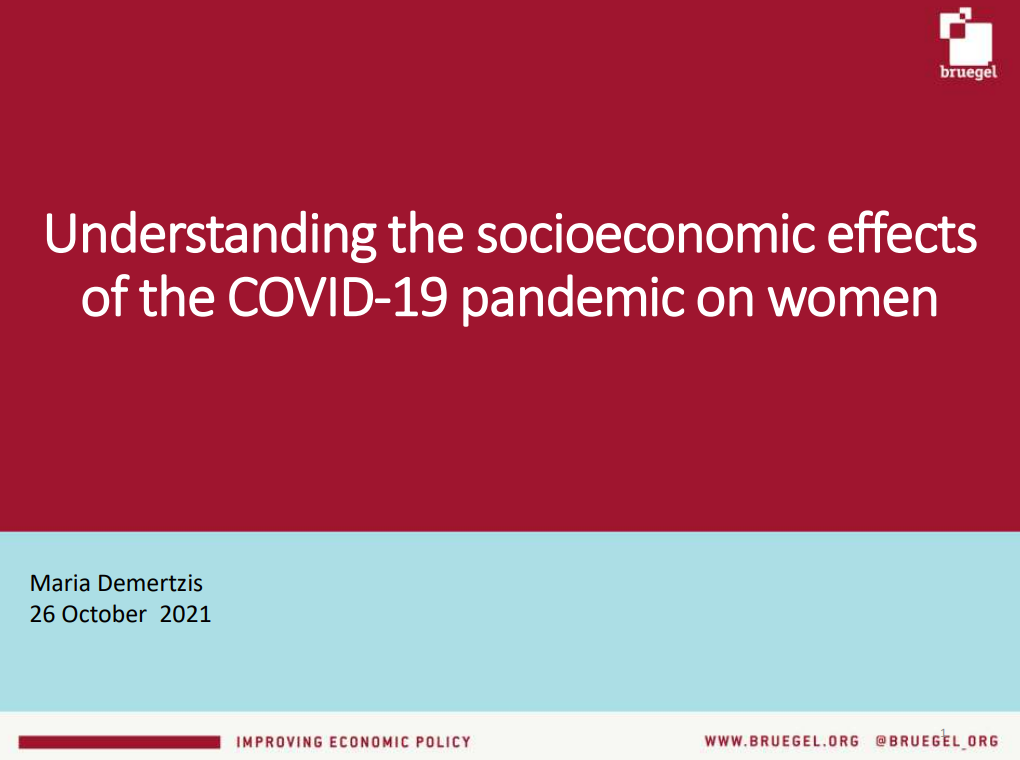Blog Post
EU enlargement 15th anniversary: Upward steps on the income ladder
Since their accession to the EU 15 years ago, the incomes of most central Europeans have increased faster than the incomes of longer-standing members and, thereby, they moved upwards in the EU distribution of income. Yet the very poorest people have not progressed in some countries.
Since the 10 central European countries joined the EU on May 1st 2004, their average income converged towards the EU average. Several aspects of EU membership could have contributed to this process, such as improved market mechanisms, institutions and business environment, access to the single market, the involvement of central European companies in European and global value chains, and access to EU education and labour markets. Perhaps the vast EU financial support of these countries also played a role (see a summary in my 10-year anniversary blog post here).
However, the picture is not universally positive. In some countries, such as Hungary, the World Governance Indicators have steadily deteriorated since the early 2000s, while in others the improvements were small or there were no improvements at all, as highlighted by Maria Demertzis and Inês Gonçalves Raposo.
Yet there was convergence in average incomes. Let’s look beyond averages: have the poor, the middle class and the rich succeeded equally since they joined the EU?
To answer this question, I approximate the income of each percentile group – that is, the poorest 1%, the second poorest 1%, and so on – for each EU member state. Then I combine them to obtain the EU-wide income distribution. I focus on disposable household incomes from the EU-SILC survey, so I consider only household income (not all kinds of income included in GDP) and after taxes and transfers. Since income shares vary quite a lot from one year to the next for the poorest and richest segments of the society, I report change from the average income in 2005-07 to the average of 2014-16. See a few technical notes about my calculations at the end of this post and let me start here by focusing on some key findings.
Figure 1 shows that the real income growth of the relatively poorer segments of the EU society benefitted rather significantly, seeing about 20-30% real income growth from 2005-07 to 2014-16 on average. The poorest 1% is not included on the chart, because their average income is negative – there are more duties to pay than their income – and it is difficult to interpret the percentage-change in a negative income. Those people belonging to roughly the 30-99 percentiles of the EU-wide income distribution benefitted from rather similar income growth of around 4%, while the richest 1% hardly saw any income growth on average.
So, Figure 1 clearly shows that the EU as a whole became more equal from 2005-07 to 2014-16.
Figure 2 shows that the share of the 12 member states that joined the EU in 2004 and 2007 (Cyprus, Czech Republic, Estonia, Hungary, Latvia, Lithuania, Malta, Poland, Slovakia, Slovenia in 2004; Bulgaria and Romania in 2007 – I have to exclude Croatia, who joined in 2013, because data starts only in 2009) was rather high among the poorer percentiles of the EU income distribution in 2005-07, but less so in 2014-16. For example, the share of the 12 new members in the second poorest 1% segment of the EU population was 96% in 2005-07, but fell to 58% in 2014-16.
The central European rich has also moved up: for example, in 2005-07, 8% of the 96th percentile of the EU income distribution was from this region (mostly due to the richest Polish). Most of these people moved up to the 97th percentile by 2014-16 (see the calculation method in the annex for further details).
There is a clear upward movement, then, on the European income ladder for both the poor and the rich central Europeans.
Let’s look at developments within countries. Figure 3 shows rather mixed changes. The rich fared much better than the poor in Bulgaria, Cyprus, Estonia, Hungary, Lithuania and Slovenia. The opposite holds for Latvia and Poland (and Croatia, for which a shorter time period is available), while for the Czech Republic, Malta, Romania and Slovakia the results are more mixed. In many countries (Bulgaria, Estonia, Hungary, Lithuania, Romania and Slovakia) the poorest 1% still has negative income (and thereby these people are not included on the chart).
Therefore, while climbing up the EU-wide income ladder is good news for most central Europeans, more attention must be paid, and more help offered, to those who are left behind.
Figure 3 also allows for some notable observations of the 15 older EU members. For example, eight of them have, on average, negative income for the poorest 1% segment of the society (Austria, Denmark, Germany, Greece, Italy, Spain, Sweden and the United Kingdom). In Italy the real income declined in all percentile groups, yet poorer people suffered even more. For example, the income of the second percentile fell by a stunning 72% in real terms, nearing Greek values. Most percentile groups, and especially the poorer people, also suffered income declines in Luxembourg, Portugal and Spain. Therefore, helping the poor should be on the agenda of most older EU member states too.
Annex: notes on the calculation method
Eurostat publishes income shares data for the following groups in each country: the 1st, 2nd, 3rd, 4th, 5th, 95th, 96th, 97th, 98th, 99th and 100th percentiles, the ten deciles and the four quartiles in its dataset “Distribution of income by quantiles – EU-SILC survey [ilc_di01]”. However, data for other percentiles are not made public and data is rounded to one digit after the decimal. Lack of further significant digits is really problematic for low-income groups because, for example, an increase in the income share from 0.1% to 0.2% might falsely suggests that the income of that group is doubled, while it could be possible that it has changed from 0.149% to 0.151%. I call (again) for Eurostat to publish at least three significant digits for all income share indicators.
I therefore use an approximation, the so-called Lorenz Curve regression method, to estimate the income share of those percentiles of the income distribution that are not available at all (percentiles between 6 and 94), and the 1st percentile which is not available with suitable precision. I found that the Lorenz Curve regression method is very precise in a recent article just published in World Development. For the 2nd, 3rd, 4th and 5th percentiles I have not used the imprecisely reported income shares, but instead I use the average of the bottom and the top cut-off income points (which are available at a high level of precision from Eurostat’s ‘Distribution of income by quantiles – EU-SILC survey [ilc_di01]’ dataset). For the 95th, 96th, 97th, 98th, 99th and 100th percentiles I used the income shares provided by Eurostat.
Price levels differ between countries, which calls for the use of purchasing-power-adjusted income indicators. However, Eurostat publishes only a current-price purchasing-power-adjusted income variable, which is ideal for cross-country comparison but not for comparison across time. Therefore, I use purchasing-power-adjusted income for the initial (2005-07) level of income, but I calculate the change from 2005-07 to 2014-16 by the inflation-adjusted local-currency value of income. The source of ‘Mean equivalised net income’ is Eurostat’s “Mean and median income by age and sex – EU-SILC survey [ilc_di03]” dataset, while the source of the price index is Eurostat’s “HICP (2015 = 100) – annual data (average index and rate of change) [prc_hicp_aind]” dataset.
Using the estimated income shares for each percentile and mean income, I calculate the actual income (in constant-price local currency) for each percentile of each country in each year. Then I calculate the change from the average of 2005-07 to the average of 2014-16 for each percentile and country. This calculation implicitly assumes that, within a country, the same people remain in the same percentile through the years. While this implicit assumption must be wrong, it can still provide a good proxy, because some people remained in the same percentiles, some have moved up, and others down.
Once these country-specific real income growth rates for each income percentile are estimated, I combine them, using population size, with the European income distribution by considering the 2005-07 income at purchasing-power standards.
Let me also note that Eurostat reports negative net income values (for the level of income) for the lowest income percentile for about half of the EU countries. Such negative income is a regular feature of income surveys. They can result from tax liabilities exceeding gross incomes or from certain investment losses, or when the business of a self-employed individual has made a loss. Of course, they can also arise from incorrect reporting. Top incomes are also generally incorrectly measured in income surveys, due the under-representation of rich people in such surveys and the under-reporting of the income of those who participate. Poorer people might also under-report their income, especially if it is earned on the black market. Such problems have to be kept in mind when working with income survey data, as I do in my post.
A final note on Eurostat data is that the various EU-SILC statistics are presented for the survey year, and not for the underlying income reference period. The income reference period in EU-SILC is a fixed 12-month period (such as the previous calendar or tax year) for all countries except the UK (for which the income reference period is the current year) and Ireland (for which the survey is continuous and income is collected for the last twelve months). That is, with the exceptions of the UK and Ireland, a value for a particular year in the Eurostat database refers to the previous year, e.g. the 2017 values in the Eurostat database refer to 2016.
Republishing and referencing
Bruegel considers itself a public good and takes no institutional standpoint. Anyone is free to republish and/or quote this post without prior consent. Please provide a full reference, clearly stating Bruegel and the relevant author as the source, and include a prominent hyperlink to the original post.














